SQ - Sound Quality
SPL - Sound pressure level, think boom boom boom
SQL - Sound quality level, think loud clear music
HU - head unit
Eg CD/DVD/mp3 player
Tweeters - Normally the small speakers on the dash that goes chicka chicka chick
Midrange speakers - Normally 4 or 5in speakers that mostly do the vocal range
Midbass speakers - The 5 or 6in speakers in your door that mostly does kick bass
Subwoofer - 9-15in speaker in a box normally found in the boot. Does low frequencies.
Component speakers - Set of 2 tweeters, 2 midbass speakers, 2 crossovers
Eg
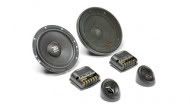
Coaxial speakers - Normally means tweeters and midbass built into one speaker, comes in pairs 4,5,6 and 6X9 in.
Eg
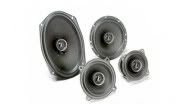
SVC - Single voice coil subwoofer, a regular uncomplicated subwoofer that only plays one impedance (normally 4ohm)
DVC - Dual voice coil subwoofer, normally can play 2 impedance (combination of 1,2,4 or 8ohm)
4ohm DVC - plays 2 or 8 ohms, needs an amp that can play 2 or 8ohms
2ohm DVC - plays 1 or 4 ohms, needs an amp that can play 1 or 4ohms
NOTE: Most amps play 4ohms for component speakers. 8ohm amp is rare. Good monoblock amps play 1,2 or 4 ohms.
DVC is NOT more powerful than SVC. You just get more options.
2ohm trades SQ for twice the power compared to 4 ohms. Likewise for 1 and 2 ohm.
Sealed enclosure - Sub in box with no holes.
Vented enclosure - Sub in box with a vent. Vent needs to be of a specific size for a specific sub.
Ready made enclosure - Not recommended.
Active subwoofer - Its actually a midbass speaker with a built in amp. You think it might give you sub bass in a small package under your seat, but no, you'll only get more midbass. To be avoided unless you really really really dun wanna put anything in your boot. Almost all ICErs who tried this at the beginning regretted, myself included. In fact I only know of one guy who kept using his.
Eg

Passive system - Uses a passive crossover, like the ones included in component speakers.
Pros - analogue sound, sounds real, "live"
Cons - tuning is done by changing components of the passive crossover, time consuming, trial and error style tuning, custom passives are expensive
Active system - No passive crossover. Crossover freqs are adjusted at the HU, electronic or HU crossover or processor.
Pros - clean, clear, easy to tune (done in 30mins)
Cons - digital sounding, not so "live" feeling
NOTE: active or passive is very subjective. You have to choose what you like. There is no one choice.
Semi active system - HU to electronic crossover to passive crossover to speakers.
You get the accuracy of the active system and the analogue feel of the passive system.
Pre-amp - Any device you put between the HU and amp. EQ, Processor, Electronic crossover, Line driver etc.
NOTE: At the accessory shop it means this:
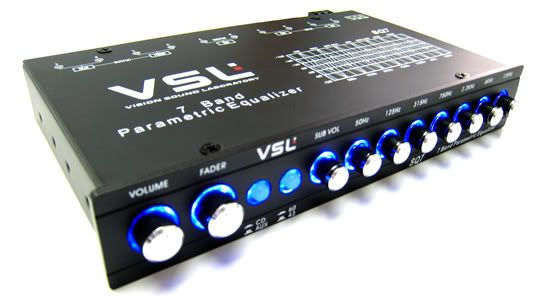
We generally agree that you should avoid something like this unless it is made by a reputable company, Audiocontrol, PG, Clarion, JL etc
EQ - Equalizer, manually boosting or attenuating individual frequencies.
Eg
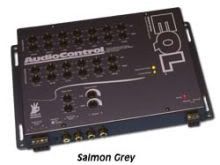
Electronic crossover - aka active or 3way crossover. Used in an active system to seperate specific range of freqs to specific speakers. Eg, you dun want the sub to do your vocals.
Eg
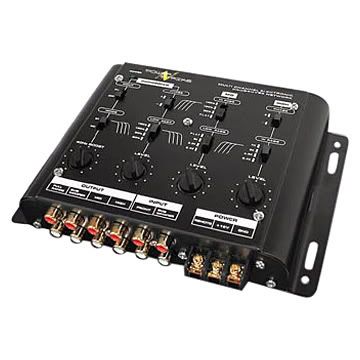
Processors - combination of EQ, electronic crossover and TA and a thousand other features in one box.
Eg
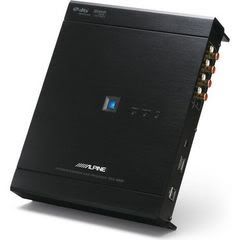
AWG - American wire gauge. A unit measurement for the thickness of a wire. Smaller is thicker.
Eg

This post has been edited by krayden: Feb 11 2013, 10:18 PM


 Aug 29 2012, 07:23 PM, updated 13y ago
Aug 29 2012, 07:23 PM, updated 13y ago
 Quote
Quote
 0.0243sec
0.0243sec
 0.77
0.77
 5 queries
5 queries
 GZIP Disabled
GZIP Disabled